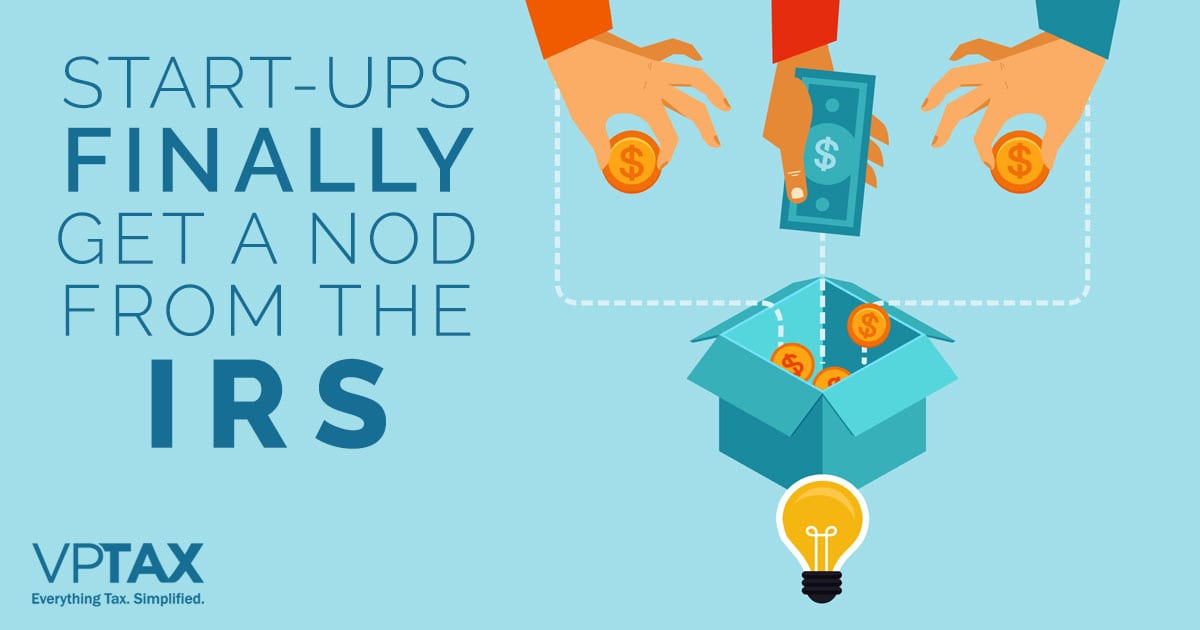
Attention Start-Ups: Extended R&D Credit Has Unexpected Use
There’s a newly refreshed federal R&D tax credit waiting for you to take advantage of and I wanted to get you up to speed on it. The research & development tax credit has now been made permanent. The changes take effect immediately.
For many start-ups and small businesses, this means you can use this credit to offset payroll taxes. You see, you can now claim your research credit against your annual payroll tax obligation up to $250,000. Gone are the days where the benefit of the credit was limited to profitable, tax-paying companies. Now, pre-revenue and not-so-profitable businesses can get immediate cash benefits.
Congress enacted the R&D tax credit to provide an economic incentive to US companies to keep technology and personnel resources in the United States. The IRS is responsible for ensuring that US companies properly claim this incentive on their tax returns.
[This is US incentive – only research activities conducted within the US are qualified for this credit.]
How do you qualify?
The IRS has taken the general idea of R&D and narrowed down what qualifies for the credit to some very specific areas.
FOUR-PART ACTIVITY TEST: To qualify, an activity must meet each of these criteria:
- Must be Technological in Nature – The activities must be rooted in hard science. Behavioral science will not qualify.
- Must be for a Permitted Purpose – the creation of a new or improved function, feature, performance enhancement, reliability enhancement, quality enhancement, or cost reduction. Sustaining engineering related to “bug fixes”, specific customer accessibility, packaging, etc. will not qualify.
- Must Eliminate Uncertainty – R&D activities should aim to eliminate the questions:
- Can we do it (capability)?
- How do we do it (methodology)?
- What is the correct design (product)?
In other words, extrapolation of an existing concept or function to new versions or scenarios does not qualify.
- Must Involve the Process of Experimentation – This prong of the 4-part test is designed to ensure that the activities qualified for the credit involve a process of testing, trial and error, and evaluation of alternatives. This is to verify that the design process is not known to you, but rather involves the development of new unknown concepts.
- Wages of individuals performing, directly supervising or supporting qualifying research activities,
- Supplies used in the conduct of qualifying research activities, and
- Contract Research, as explained below, including payments to others for the conduct of qualifying research activities.
- The contract is entered into prior to the conduct of the research,
- The research is performed on behalf of the payer (payer retains rights), and
- The payer must bear the cost even if the research is not successful.
- Payment for the research is contingent upon success, and
- Developer retains substantial rights in end products.
/ol>
Qualified R&D Expenditures: The following expenditures are eligible for the credit:
Contract Research: Development activities conducted by non-employees (i.e. R&D performed by independent contractors, etc.) can qualify if:
Funded Research: Development paid for by others (eg: government grants, etc.) generally does not qualify for the credit, unless:
ul>
What should you do next?
The challenge you’re going to run into is that many firms don’t know how to process this credit, nor are they equipped to advise you on the information you will need to prevail when the government shows up at your door.
At VPTax, Inc., we will teach you how to do it or you can just have us do it for you. All you have to do is give us a call.